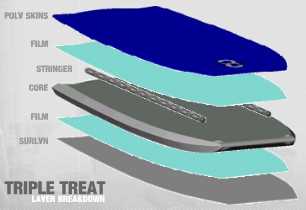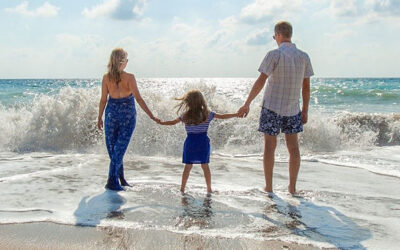In the beginning there was PAIPO (bodyboard)
The Paipo, also called in Hawaiian “kioe,” was a rigid wooden bodyboard 2- to 4-feet in length, ridden in a lying position.
The most common sport is on the water, when the sea is very high, and the surf breaks on the beach. The men, sometimes 20 or 30, go to a point of the swell, and lie down on an oval part of the plank adapted to their size and breadth, keeping their feet close together, and their arms being used to guide the plank.”
Source: Lieutenant James King, 1778, Kealakekua Bay, Hawai`i, from an unpublished log of 1778. Reprinted “in the Voyage of the Resolution and Discovery,” by John C. Beaglehole (1967); as quoted in “Surfing, a History of the Ancient Hawaiian Sport,” by Ben Finney and James D. Houston (1996, Pomgranate Artbooks, San Francisco).
Polynesia : The birthplace of the Paipo table. Forced to migrate to a larger region by population growth and pressure, the first Polynesians arrived in the Hawaiian Islands in the fourth century AD.
The Polynesians who made the arduous journey from Tahiti and the Marquesas to Hawai’i were necessarily very seaworthy men and women and brought a deep love and knowledge of the ocean with them. The Polynesians who settled in Hawai’i also brought their customs including playing the game of surfing on paipo boards.
Although it is said that the Tahitians were able to surf, the art of surfing on longboards was certainly perfected if not invented in Hawai’i.
The Hawaiian Paipo board is the ancient equivalent of today’s “boogie” or “ bodyboard ” board.
The introduction of the “Morey Boogie” board in the early 1970’s allowed the sport of “boogieboarding” to experience very rapid growth and popularity. The invention of this “soft Paipo board” led to a rapid decline of the “hard” foam and fiberglass paipos.
The benefits of Boogie boards (bodyboards) were many: safe for children, economical (cheap!), and usable on beaches where hard boards were banned.
See how to choose the correct length of bodyboard
Bodyboarding is a fascinating and dynamic water sport that involves the use of a short board, usually made of foam, to ride the waves. It is a form of surfing that involves the rider’s ability to navigate the water, using the force of the waves to perform spectacular and fun maneuvers. This sport, born in the 1970s, has gained popularity worldwide due to its accessibility and relative ease of learning compared to other similar disciplines.
A bodyboard is typically shorter than a traditional surfboard, typically measuring 90 to 110 centimeters. Its shape is characterized by a rounded front end and a pointed rear end, designed to facilitate control during maneuvers and provide optimal buoyancy. The bottom of the board is often equipped with a smooth coating or channels to improve stability and directionality.
Using a bodyboard at sea requires a combination of skill, balance and a good dose of adventurous spirit. Here is a guide on how to approach this exciting sport :-
- Board Stance : The basic board stance is essential for a bodyboarder. Lying flat on the board with your body centered and your arms at your sides helps you maintain proper balance and control while riding the waves.
- Paddling : Paddling is essential for reaching waves and gaining the speed needed to ride them. Using hands and feet to push through the water, the rider positions himself in just the right spot to catch the wave.
- Catching Waves : When a wave approaches, the bodyboarder must move quickly and position himself strategically to catch its energy. Once over the wave, the body is lifted off the board as the rider begins to slide down the face of the wave.
- Maneuvers : One of the most appealing features of bodyboarding is the ability to perform a variety of acrobatic maneuvers. These can include spins, rotations, and cuts across the face of the wave, adding an element of style and creativity to the experience.
- Exiting the Wave : Knowing when to exit the wave is just as important as catching it. Experienced bodyboarders learn to read the wave’s movement and choose the right moment to exit it, preparing themselves for the next opportunity.
Bodyboarding is suitable for a wide range of skill levels, from beginner to advanced competition. Beaches with soft, consistent waves are ideal for learning, while more experienced riders can look for beaches with more challenging waves and more advanced maneuvers.
In conclusion, bodyboarding is a fun and accessible sport that offers an exciting way to enjoy the waves of the sea. Whether you are a beginner approaching the sport for the first time or an expert looking for a new challenge, bodyboarding is a form of aquatic expression that allows anyone to connect with the power and beauty of the ocean.
As we continue to explore bodyboarding, it is essential to emphasize the importance of proper equipment. In addition to the board, a key component is the leash, a strap attached to the bodyboarder’s ankle that ensures the board is not lost during wave adventures. Fins, worn on the rider’s feet, add stability and speed, facilitating movement through the water.
Another key aspect is safety, Awareness of sea conditions, understanding currents, and respecting beach rules are essential to safe bodyboarding. Choosing a beach that is suitable for your skill level and knowing the weather and tides are crucial to avoiding risky situations.
For those new to bodyboarding, taking lessons from qualified instructors can help speed up the learning curve. Instructors can provide valuable tips on positioning, paddling technique, and timing for catching waves. They can also teach safety and proper etiquette on beaches frequented by surfers and bodyboarders.
Physically, bodyboarding provides an excellent core and arm workout. The constant paddling, combined with the effort of lifting and sliding along the wave, helps improve strength and balance. Additionally, the contact with the water and salt air promotes general well-being, providing a relaxing outlet for everyday stress.
When considering the benefits of 360-degree or panoramic photography in the context of bodyboarding, several interesting aspects emerge. Immersive images of bodyboarding sessions can capture the magic and excitement of this aquatic sport in ways that traditional photos cannot. The ability for enthusiasts to share these images on websites, social media, or platforms like Google Maps provides a global showcase for their aquatic adventures.
The 360-degree visual effect allows viewers to virtually immerse themselves in the action, experiencing the adrenaline rush of riding the wave and the thrill of performing acrobatic maneuvers. This not only provides an immersive experience for enthusiasts, but can also spark interest among those new to bodyboarding, spurring the growth and spread of this fascinating sport.
In conclusion, bodyboarding is a dynamic and accessible form of surfing that offers both beginners and experts the opportunity to experience the thrill of the waves. With the right equipment, a good understanding of the sea conditions and respect for safety rules, bodyboarding can become an exciting adventure for anyone who wants to connect with the ocean and live a unique experience on the water.
